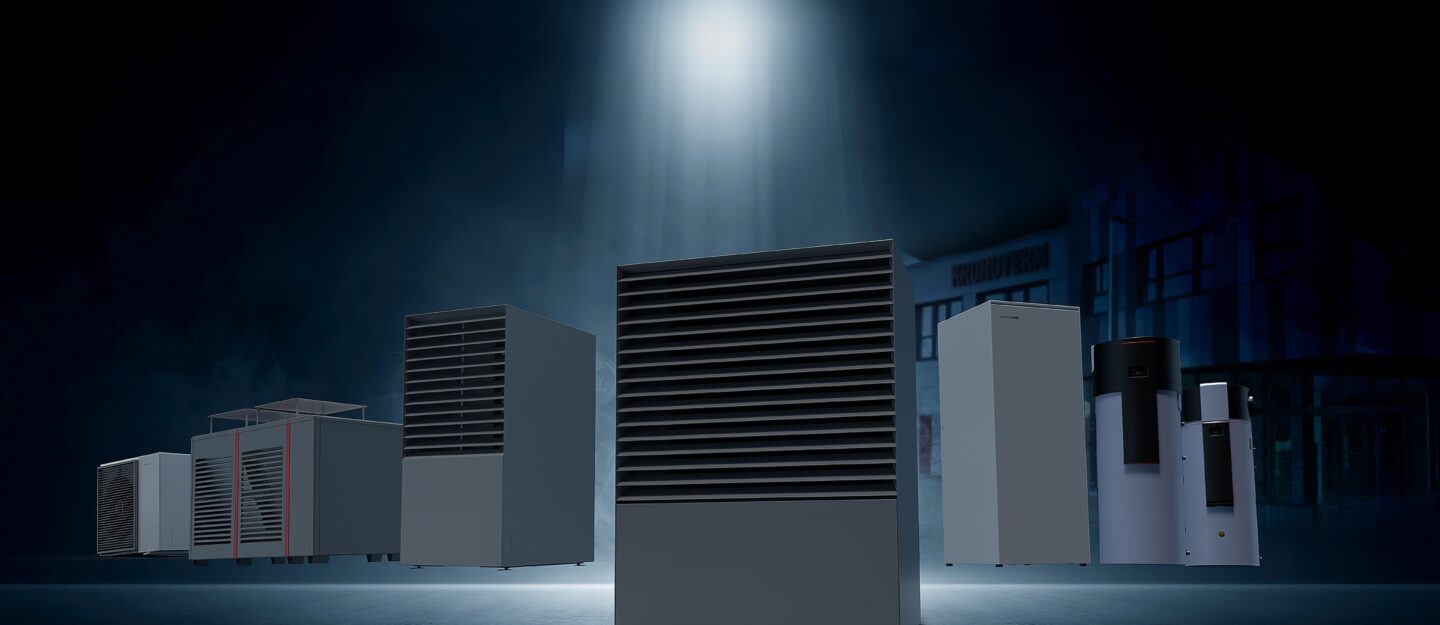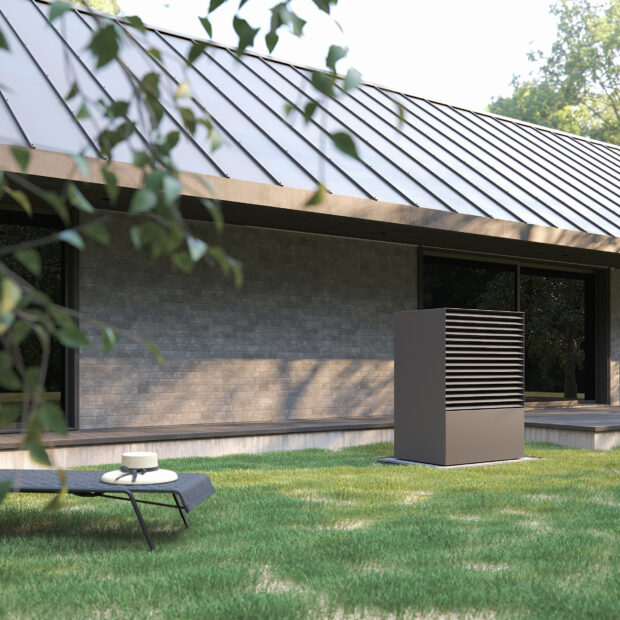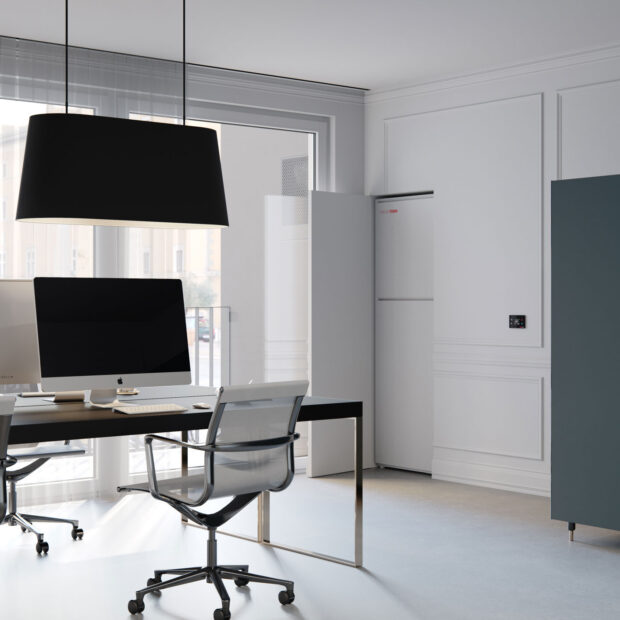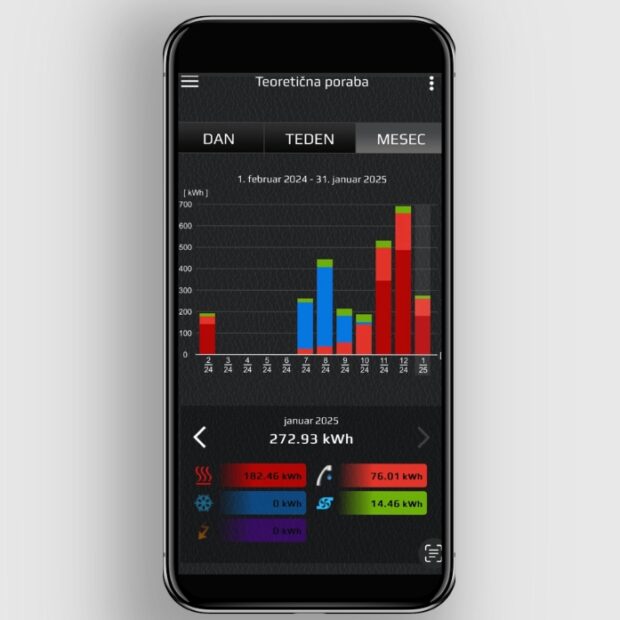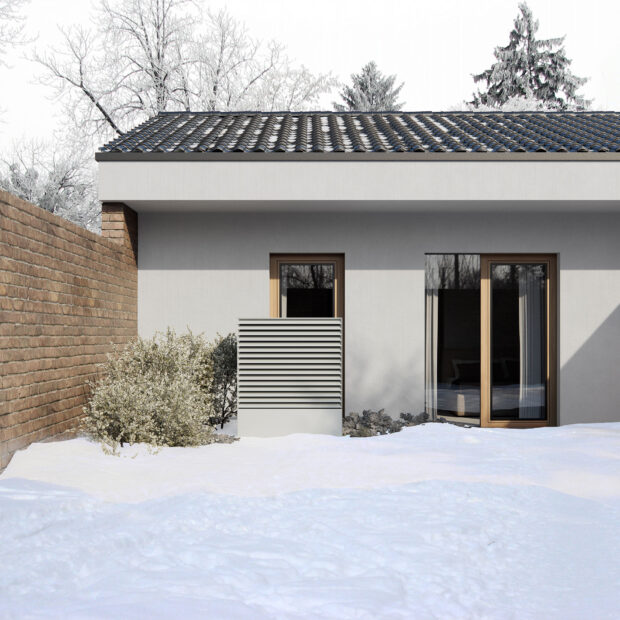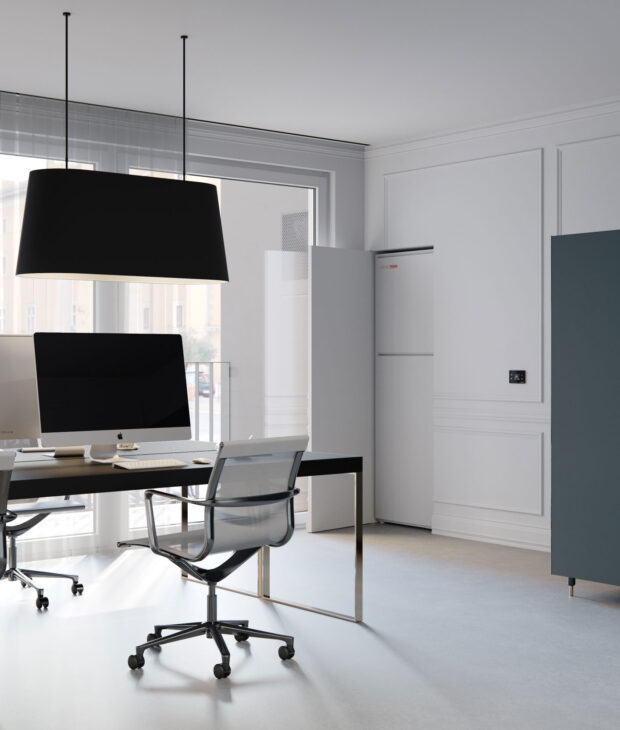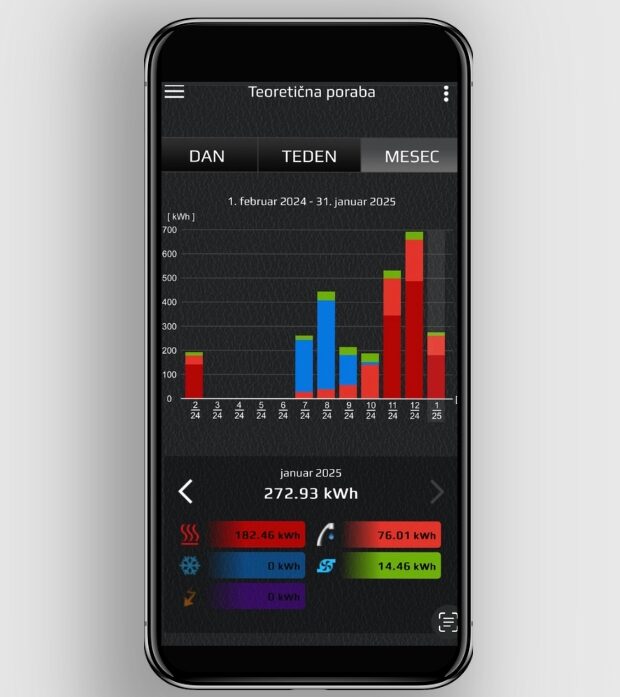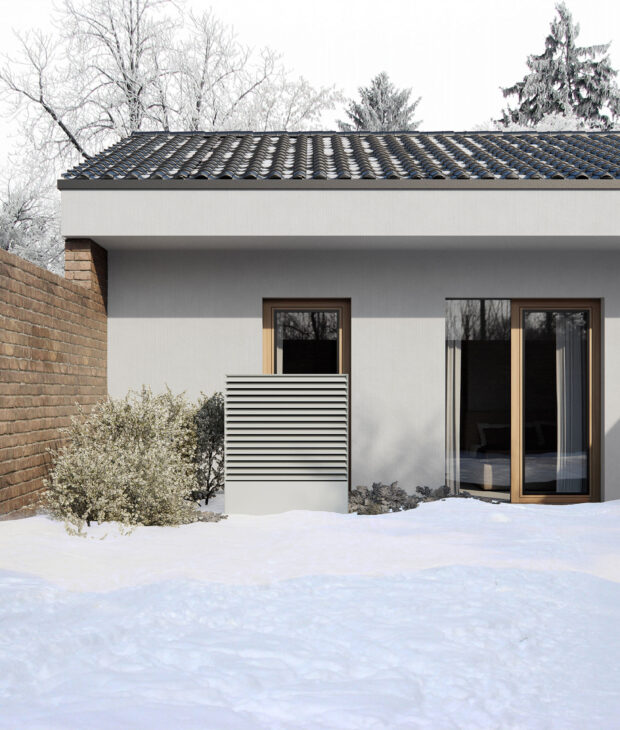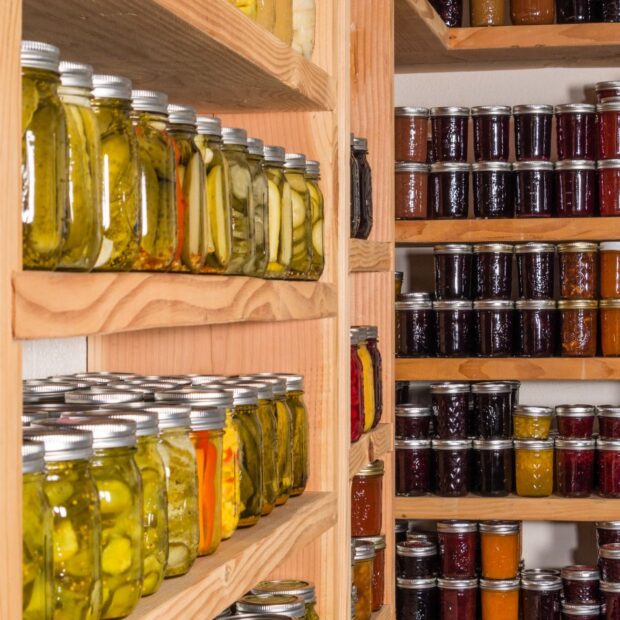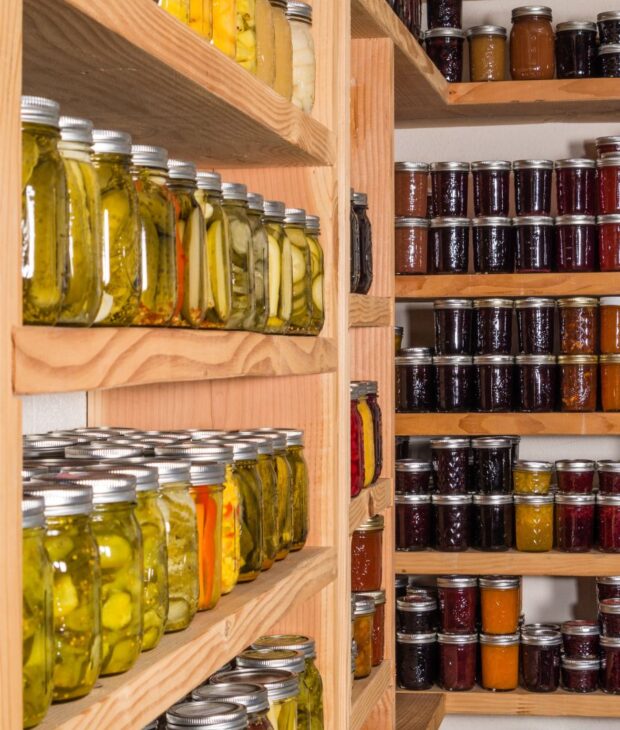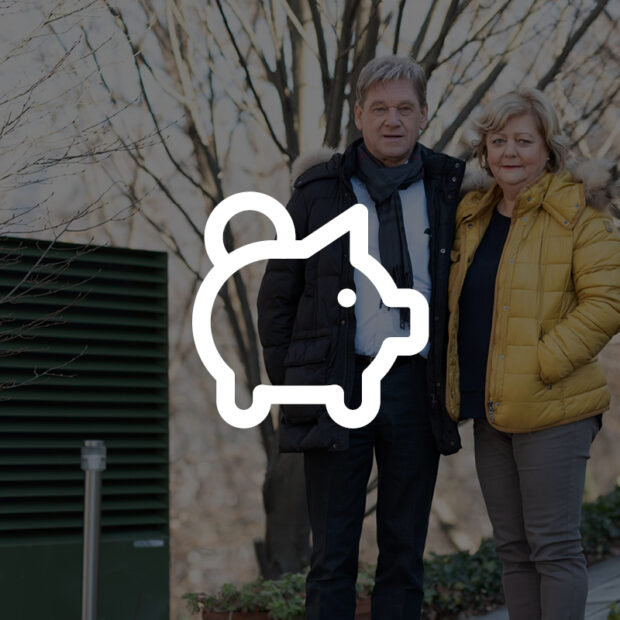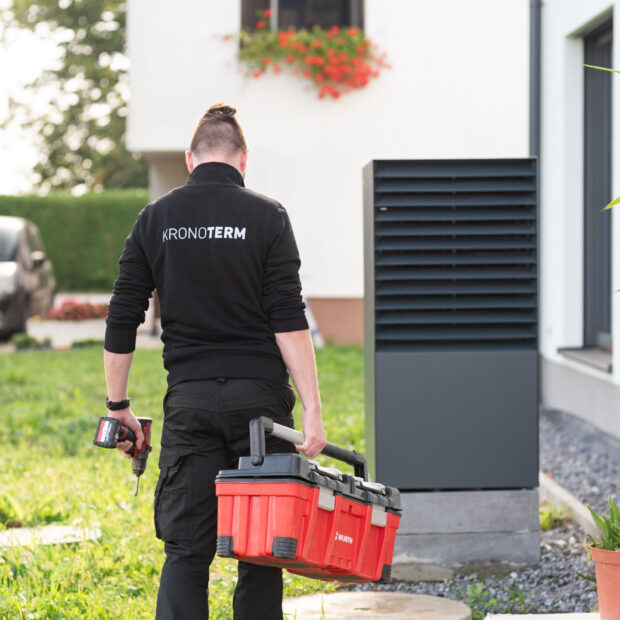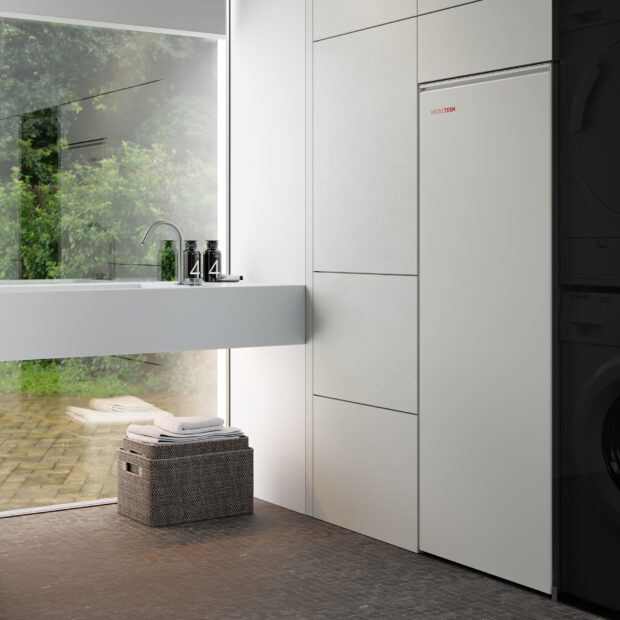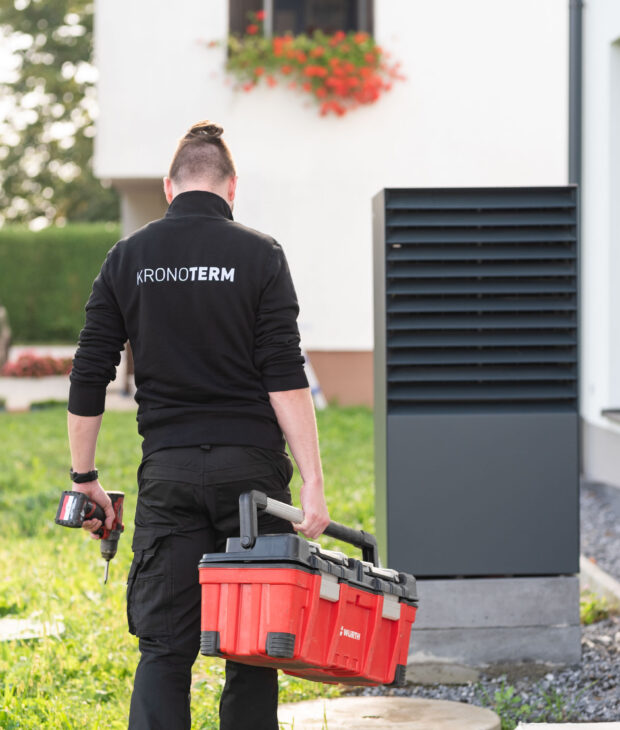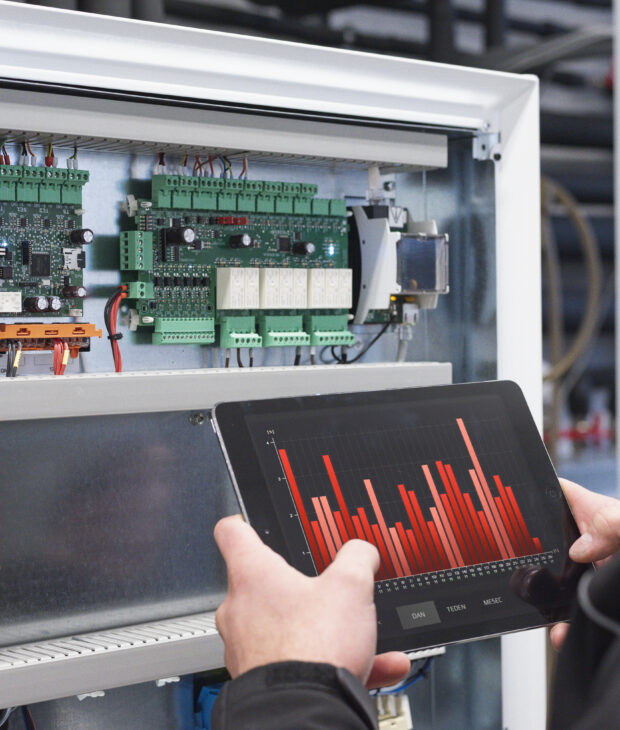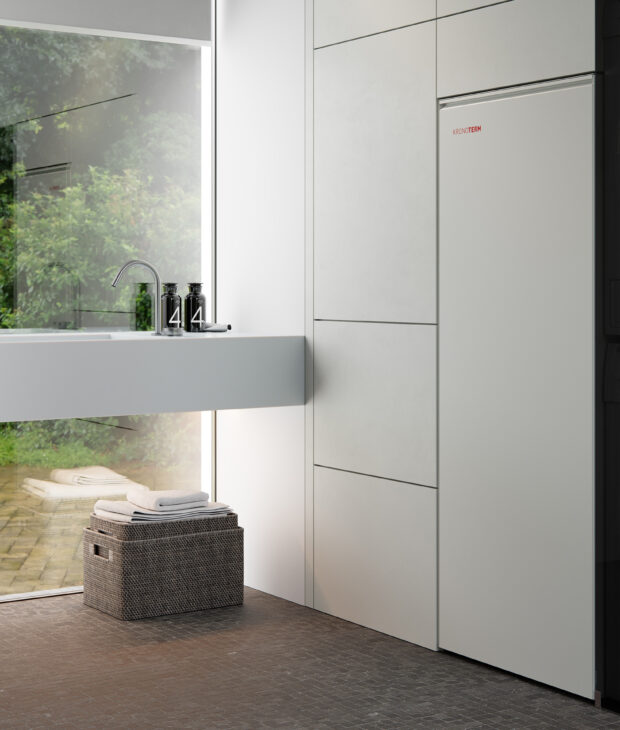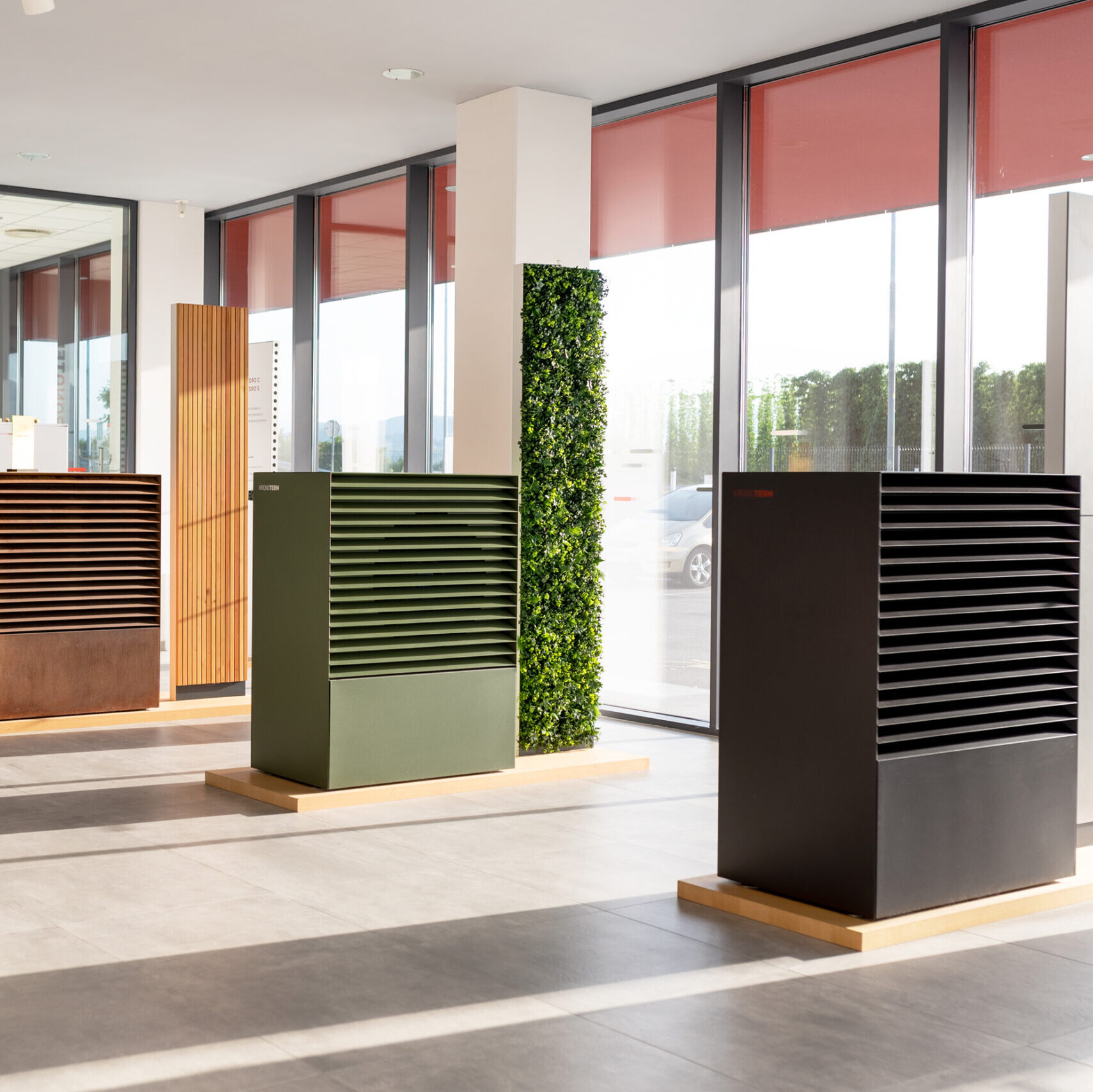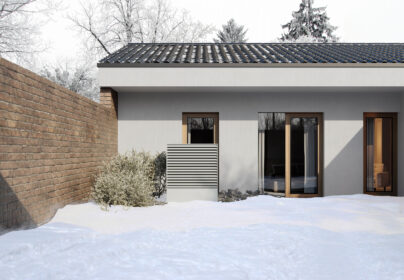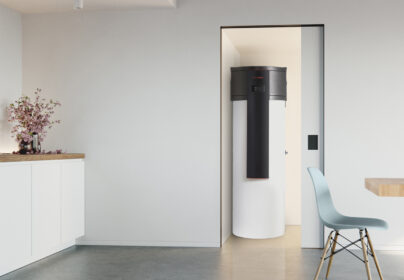After the initial consultation, the installer will review your project details and recommend the best system setup for your home. In some cases, a site visit may be arranged to confirm installation options and ensure the right system size and placement. This step helps achieve optimal performance, quiet operation, and long-term energy efficiency tailored to your property.
Air-source installation
We place the outdoor unit on a firm base with clear airflow. Indoors we fit an indoor unit, connect tidy pipework and a dedicated electrical supply, then commission the system. Most air-source heat pump installations are done in a single day.
Ground-source installation
If you choose ground-source, vertical collectors or horizontal ground collectors will be installed in the garden and bring insulated pipes to an indoor unit. Groundworks are usually 1–3 days, with 1 day for the plant room and commissioning.
Water-source
With access to groundwater, we install immersed or open-loop collectors, add filtration, and connect them to the indoor plant. Permits are arranged up front.


